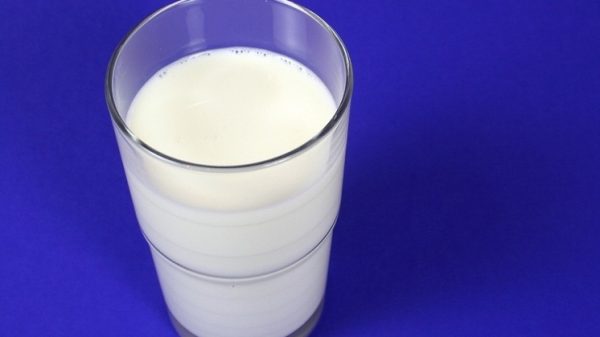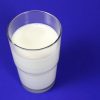
< br />
MOSCOW, December 2, Vladislav Strekopytov. The objects around us, food packaging, dishes and even house dust contain chemicals that make a person fat. Scientists have identified them as a separate group. About how they act on the body and whether it is possible to protect yourself from them — in the material .
The problem of excess weight
An obesity epidemic is sweeping the world, especially noticeable in developed countries. And a simple model based on a balance of calories in and calories out doesn't seem to work. Scientists note that over the past 20-30 years, the number of calories in food consumed has not increased, but rather decreased, due to the fact that people began to consciously choose low-calorie foods.
The thesis about a sedentary lifestyle also turned out to be untenable. Despite the fact that more and more people are involved in physical education and sports every year, the level of obesity in the world, according to WHO, has tripled since 1975. In the United States, for example, in 2000, 30.5 percent of the country's population was overweight, and in 2018 — already 42.4. And this applies not only to people. The body weight of domestic animals — dogs, cats, rodents — increases. Scientists are looking for the cause.
Metabolic disorders
All weight loss diets are based on including some foods in the diet and eliminating others. Or on dietary restrictions. However, there is an opinion that the problem is not in the products themselves, but in the harmful chemical compounds that are contained in semi-finished products, canned food and ultra-processed foods, as well as in dishes and packaging. Scientists have found that many of them push the body to form fat cells. These substances are classified into a special group — obesogens (literally: “producing fatness”).
The term was coined by UC Irvine biology professor Bruce Bloomberg. In 2006, he discovered that organotin compounds, used as stabilizers in the production of polyvinyl chloride (PVC), from which the lion's share of disposable tableware and food containers are made, contribute to the formation of fat in mice. Animals whose food was mixed with tributyltin chloride particles gained weight unusually quickly. The results of the study showed that they, compared with the control group, which received the same caloric food and were exposed to the same physical activity, had impaired lipid metabolism and accelerated accumulation of fat in the tissues, liver and ovaries.
Diethylhexyl phthalate (DEHP), a common plasticizer found in plastic utensils and food containers, as well as many other household items (tablecloths, ceramics, curtains, toys, upholstery, garden hoses, floor and wall coverings, cosmetics), has also been found to be obesogen — this has been confirmed by numerous experiments on mice. Long-term observational studies in humans have found a correlation between high levels of phthalates in the blood and weight gain.
Per- and polyfluoroalkyl compounds (PFAS) are even more common around us. Due to their hydrophobic (water-repellent) properties, they are widely used in the production of packaging materials, non-stick cookware, cosmetics, cleaning products, clothing and shoes. PFAS are extremely resistant to degradation. Once in the soil or water, they remain there for a very long time, which is why they are called eternal pollutants.
Over the past 20 years, many scientific publications have appeared proving the extreme harmfulness of PFAS to humans. They cause a wide range of serious health problems, from immune system dysfunction to infertility and cancer. In addition, they disrupt lipid metabolism, which leads to fat accumulation. Bisphenol-A, another common substance that has been used for more than half a century in the production of plastics, toys, dishes, paper and many other everyday items, also has a similar effect.
In total, scientists included more than 50 compounds in the group of obesogens, including nicotine, flame retardants found in paints and protective coatings, most pesticides and chemical fertilizers, as well as some medications.
Mechanism of action
Biologists suggest that obesogens act like a biochemical switch that switches internal metabolism into fat storage mode. Perhaps this is due to some ancient survival mechanism that was formed by our distant ancestors, who learned to accumulate fat for a rainy day following a signal from the outside. But why the body perceives obesogens as such a signal, scientists do not yet know.
The primary regulator of fat cell formation is considered to be the peroxisome proliferator-activated receptor gamma receptor (PPARγ). Peroxisomes, small organelles, are present in all eukaryotic cells and contain enzymes that can oxidize certain organic substances, including fatty acids.
When the PPARγ receptor is triggered, the cells become fat cells. Scientists have found that many substances from the group of obesogens — bisphenol-A, plasticizers, phthalates, flame retardants, PFAS — are able to bind to this receptor and activate its action. The worst thing is that the cell changes its metabolism once and for all, which is why it later accumulates fat well and releases it poorly.
This may not be the only biochemical mechanism of action of obesogens. Thus, studies by Bloomberg's group and other scientists have shown that people with elevated levels of PFAS in the blood are more likely to have thyroid dysfunction and problems with appetite control, and also have changes in the so-called basal metabolic rate — the amount of energy that the body burns at rest. . This is a basic indicator of metabolism, on which body weight critically depends. It is also known that phthalates affect digestion by preventing the breakdown of fats, and bisphenol-A is generally involved in a variety of processes — from the accumulation of lipids to the regulation of insulin levels.
Most worryingly, some chemical exposures that cause weight gain can be passed on from generation to generation by changing how genes work.
< h3 id="1913215389-4">Unipresent enemies
To reduce the harmful effects of obesogens, experts recommend using less plastic containers and never heating food in them in the microwave, not buying processed and packaged food, but only fresh raw ingredients, and preparing your own food at home and purchasing drinks in glass containers. An alternative to non-stick pots and pans is traditional cast iron and steel cookware.
“To minimize the impact of obesogens, choose natural products, for example those grown using organic farming methods, use natural substitutes for household chemicals — vinegar, soda, lemon juice, mustard, use less plastic utensils,” advises nutritionist Sergei Sergeev.
K Unfortunately, he notes, this is unlikely to help completely protect yourself from harmful substances that affect the endocrine system. The fact is that nowadays obesogens are found everywhere: in clothing, furniture, cosmetics and personal care products.
There are especially many of them in ordinary house dust — and, according to scientists, a person swallows about 50 milligrams of it daily. Experiments on mice have shown that dust is a powerful factor in the accumulation of triglycerides in preadipocytes, the precursors of fat cells. Subsequent studies found that substances contained in dust suppress thyroid receptors and activate PPARγ.
In addition, the products themselves contain many additives that disrupt metabolism. These include numerous flavorings and flavor enhancers (the best known is monosodium glutamate, or E621), emulsifiers such as sodium dioctyl sulfosuccinate, or parabens used as preservatives in food and personal care products.
It is important Understand that while chemicals in food and packaging can affect metabolism, weight gain is always the result of a complex interaction of many factors, including genetics, lifestyle, diet and environment.

























































Свежие комментарии